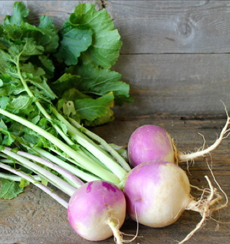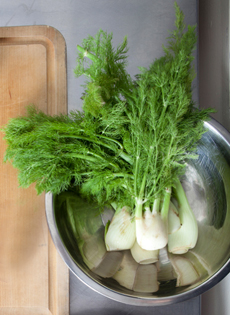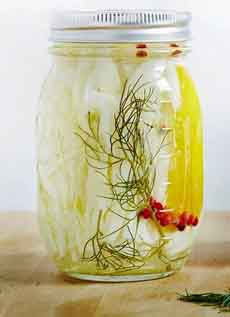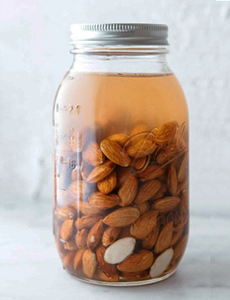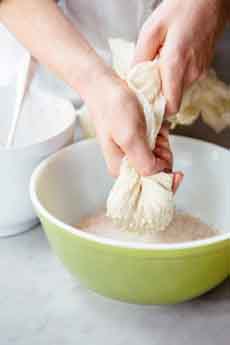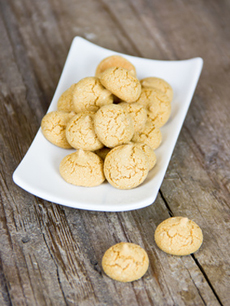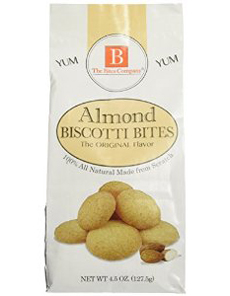|
Many people don’t like broccoli stems, as proven by the bags of florets-only in the produce section. But while the texture is different, the stems are just as tasty, with just as much nutrition and cruciferous antioxidants.
If, for whatever reason, you don’t cook them along with the florets, put them to another use.
Cook and purée them.
Shave them raw into salads.
Steam and add them to omelets and cooked grains.
Add them to soup.
Toss them into a stir-fry.
For the tenderest results, you can use a vegetable peeler to remove the outer layer of supermarket broccoli stems before cooking; they tend to be tougher than just-harvested greenmarket broccoli. Then, you can cook them as you like or keep shaving the raw stems for a salad ingredient.
In the recipe that follows, the raw stems are sliced into thin circles and turned into their own salad: broccoli stem salad! Who needs lettuce?
This recipe is by Kate Galassi for Quinciple, a delivery service that brings the week’s best fruits and vegetables to your door.
RECIPE: BROCCOLI STEM SALAD
Ingredients For 2 Servings
2 broccoli stems (from 2 large heads of broccoli)
½ garlic clove, crushed
½ lemon, juiced
4 tablespoons olive oil
Pinch of chili flakes (crushed red pepper)
Salt and pepper
¼ cup mixed fresh herbs, such as basil, mint or parsley; or fresh or dried oregano* and thyme*
___________________________________
*A little bit of oregano and thyme go a long way, so don’t use too much in your blend.
|
|

[1] If you don’t cook the broccoli stems, make a broccoli stem salad (photo and recipe © Quinciple.

[2] The little green “trees” with robust stalks and branches got their name from the Latin word “bracchium,” which means strong arm or branch (photo © Burpee).
|
Preparation
1. SHAVE the stems into paper-thin slices with a mandoline. If you don’t have one, use a very sharp chef’s knife to slice the stems as thinly as you can.
2. WHISK together the garlic, lemon juice, olive oil, and chili flakes, and toss with the sliced broccoli stems. Season with salt and pepper and let sit for fifteen minutes. Meanwhile…
3. PICK the herb leaves off their stems. Small leaves, including parsley, can stay whole. Larger leaves of basil and mint should be torn into smaller pieces. Or, chop them all if you like, with a mezzaluna or other tool.
4. DIVIDE the broccoli salad between two plates and garnish with the fresh herbs.
THE CRUCIFEROUS VEGETABLES FAMILY
Broccoli is a cruciferous vegetable, a member of the Brassicaceae family of cancer-fighting superfoods.
“Cruciferous” derives from cruciferae, New Latin for “cross-bearing.” The flowers of these vegetables consist of four petals in the shape of a cross.
The family includes arugula, bok choy, broccoli, Brussels sprouts, cabbage, cauliflower, collard greens, horseradish, kale, kohlrabi, mizuna, mustard greens, radish, rapeseed/canola, rapini (broccoli rabe), rutabaga, tatsoi and turnips.
They’re low in calories and high in fiber, vitamins, and minerals. You can’t eat too many of them, but you can overcook them. You’ll know they’re overcooked when an unpleasant sulfur aroma appears. They’ll also fade in color.
That’s because all cruciferous vegetables contain chemical compounds that, when exposed to heat for a sufficient amount of time, produce hydrogen sulfide.
So, enjoy them on the al dente side.
CHECK OUT WHAT’S HAPPENING ON OUR HOME PAGE, THENIBBLE.COM.
|


